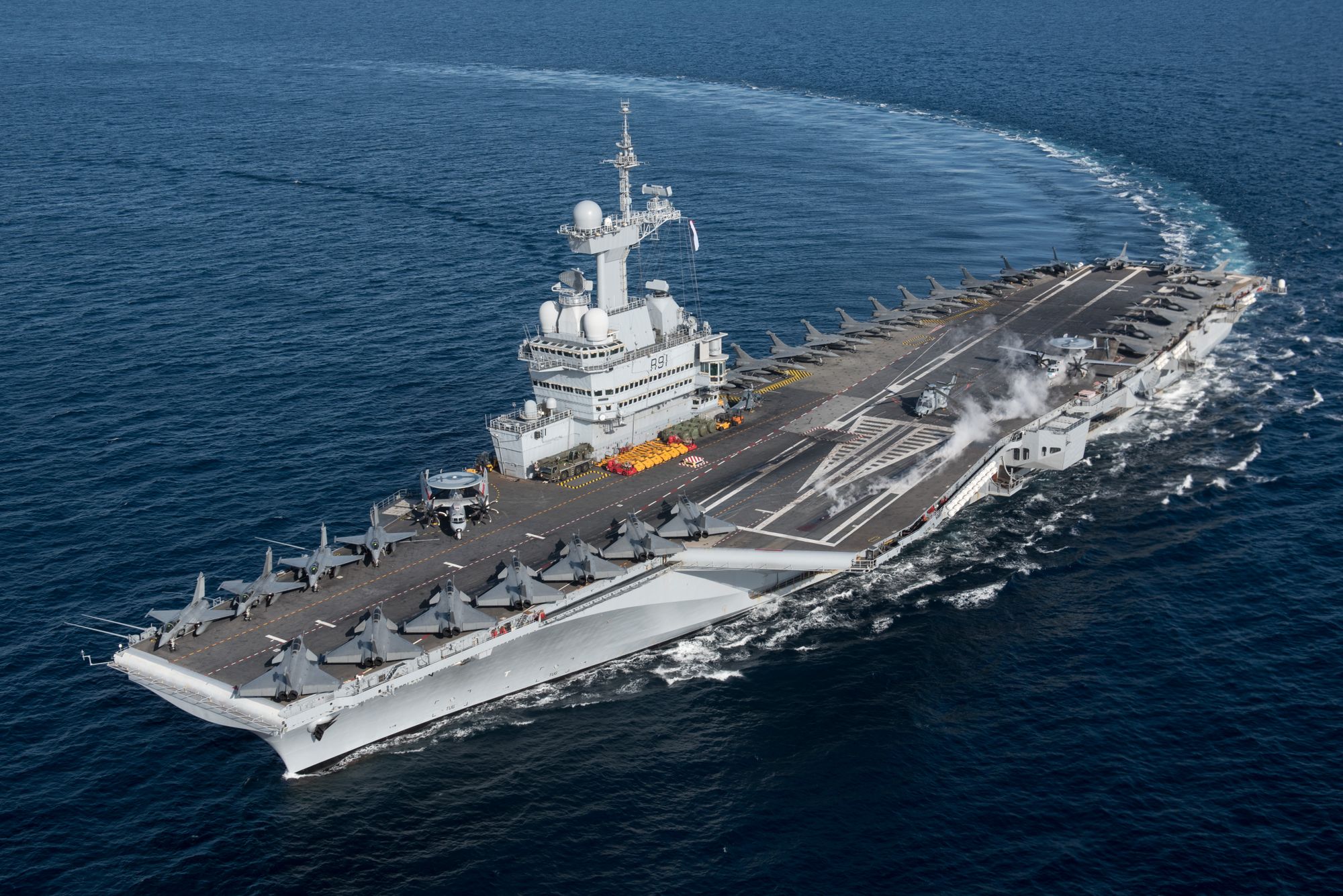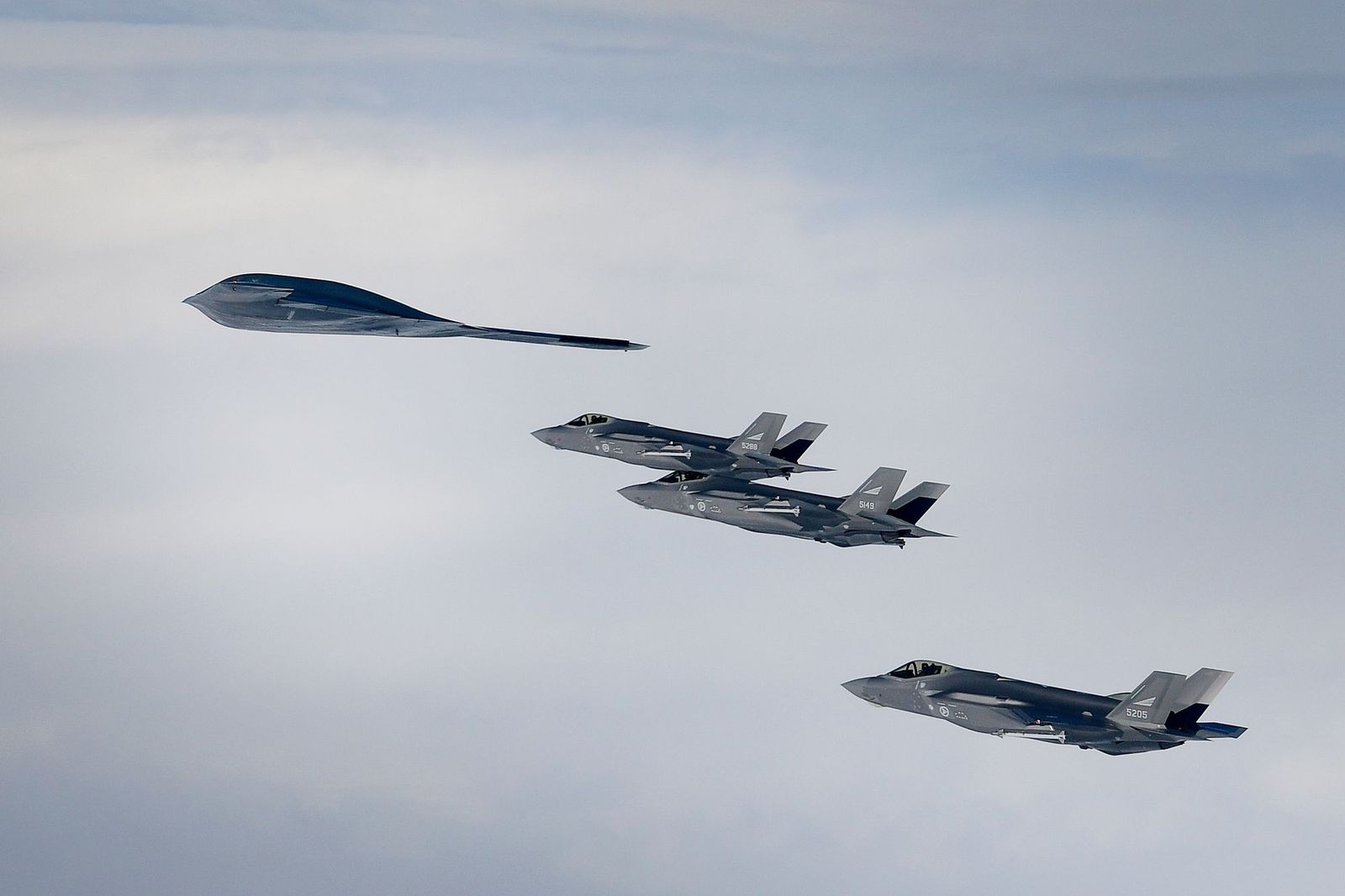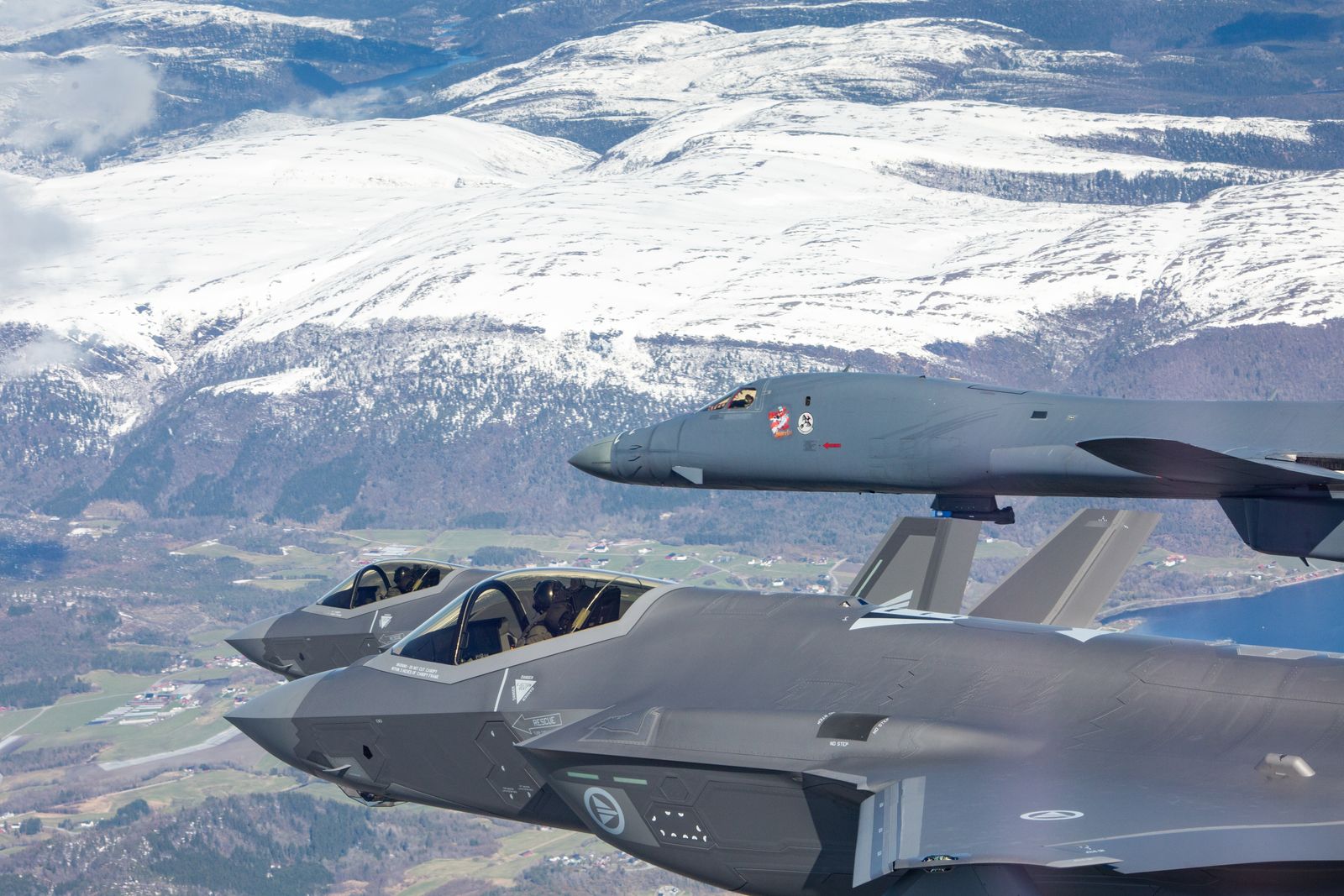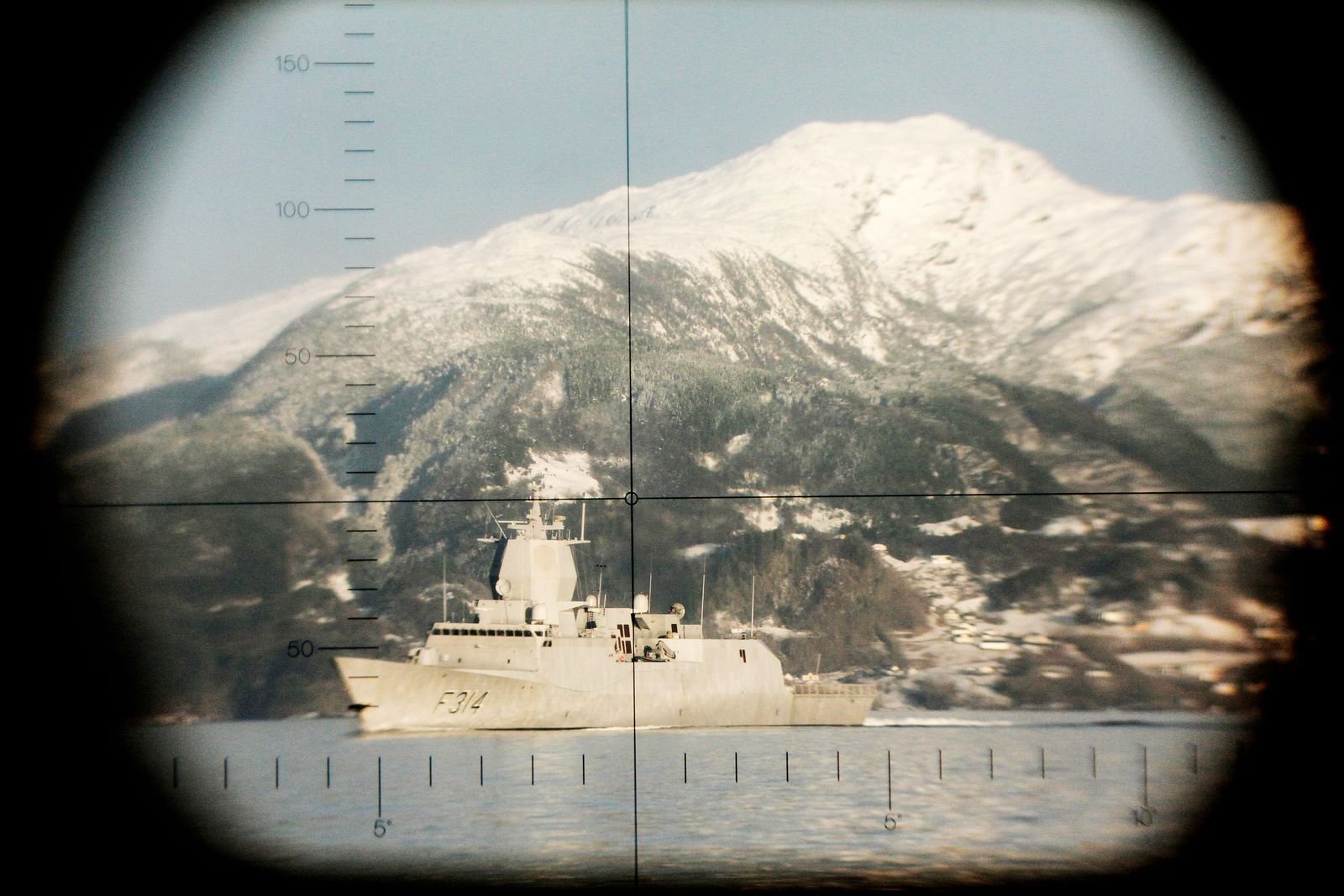In an undoubtedly Volatile, Uncertain, Complex, and Ambiguous (VUCA)[1] world, facing the rise of major competitors, France is now more than ever dedicated to mastering seapower in order to address both current and future challenges, particularly those within its large Exclusive Economic Zone.[2]
According to Geoffrey Till,[3] the four attributes of the sea, consisting of “a resource, a medium of transportation and exchange, a medium for information and the spread of ideas and a medium for dominion”, indulge maritime nations to strive to obtain seapower through military and commercial operations.
In the past decades, there has been a marked shift from power at sea to power from the sea, forcing military navies to rethink and expand their use of effects. Following this momentum, maritime air power has become a key asset, leading the United Kingdom, Italy, China, India, South Korea, Japan and others to accelerate the development of a competitive carrier strike group and strengthen their maritime patrol capabilities.
Under this context of boding unprecedented rivalry at sea, France relies on its centennial naval aviation experience to exploit its command of the sea. Through a power projection formed in cooperation with the French Air Force and NATO units, France is able to enhance its maritime patrol assets to achieve sea control.
The French Carrier Strike Group (CSG)
For more than 70 years, the French Navy has been developing a full set of CSG capabilities. First with former US carriers in the 50s, and then with indigenous CATOBAR[4] flagships, Clemenceau and Foch which included a mix of both French and US fixed-wing aircraft. Since the year 2000, the nuclear aircraft carrier, Charles de Gaulle, has been the French fleet’s capital ship. Today, it is escorted by a Horizon-class destroyer, a multi-missions warfare frigate FREMM (anti-submarine, anti-surface and strike warfare), a NATO warship, a nuclear attack submarine, and a support ship, embarking a powerful and versatile air wing. Indeed, through CSG network-centric warfare, this air wing –composed of 24 navy Rafale fighters, 2 E-2C Hawkeye, 1 NH90 Caiman and 2 Dauphin- is capable of mastering all of the sea power military domains: sea control, ISR[5] (gather and analyze in quick loops), strike warfare, support-to-ground operations, Allied maritime component command, and nuclear deterrence.
To achieve such effectiveness, the fleet admiral staff works closely with the aircraft carrier, air wing, and escort ships teams to maneuver the carrier battle group in an autonomous or joint setting, depending on the circumstances. Therefore, the CSG’s main objective is to act as a system capable of providing layered defense for itself while remaining free to project and deliver airpower when needed. On this matter, one of the several challenges is to consider the variety of air, surface, and subsurface threats, then to delegate the corresponding warfare responsibilities to their appropriate levels.
A Constantly Evolving Capability
It takes decades to master this level of sea command, especially the ability to integrate other nation’s assets, and only a few years to become obsolete on tactical or technical levels. Thus, French CSG is continually adapting to new threats and an even more complex environment. For example, during the Charles de Gaulle’s last overhaul in 2017, it underwent a complete update of its Command Management System (CMS), during the optimization of its platform to host a full navy Rafale air wing (for both the maintenance and ammunitions). In 2019, the French “CSG 2.0”, escorted notably by a cruise missile equipped FREMM during its 5 months deployment in the east of the Indian Ocean demonstrated the French Republic’s sea maritime power ambition. Indeed, the many air and naval interactions between Allied nations (such as between the U.S., India, Singapore, Egypt, and Oman) during the air operations conducted for Operation Inherent Resolve (OIR) in Iraq and Syria have thus demonstrated how air maritime power is a decisive component for effective cooperation.
Many navy programs are securing French CSG effectiveness, such as:
- 4 new support ships (2023-2029): 31,000 tons of displacement, 13,000m3 of fuel, enhanced ammunition storage.
- 3 E-2D Advanced Hawkeye (2027-2028): enhanced radar, communication system, electronic warfare, and air-to-air refueling capability.
- Navy Rafale F-4 standard (2023): helmet-mounted display, enhanced radar sensors and front sector optronics, new air-to-air and air-to-ground weapons.
- Nuclear Attack Submarine Suffren (2022): providing unprecedented anti-submarine, anti-surface, ISR and strike capabilities (especially with cruise missiles), and enhancing special forces support.
- Horizon destroyer mid-life update (2028): enhanced CMS
Furthermore, the design of the next generation of CSGs is currently underway with the “Future French Aircraft Carrier”program launched in 2018. By December 2020, it was confirmed to be nuclear- powered. On the other hand, the “Future Combat Air System” project is currently entering a new phase in 2021 to achieve a flight demonstrator in 2027/2028. These two programs, linked with many others, are critical in proving France’s determination to continue mastering air maritime power through the CSG concept until the end of this century.
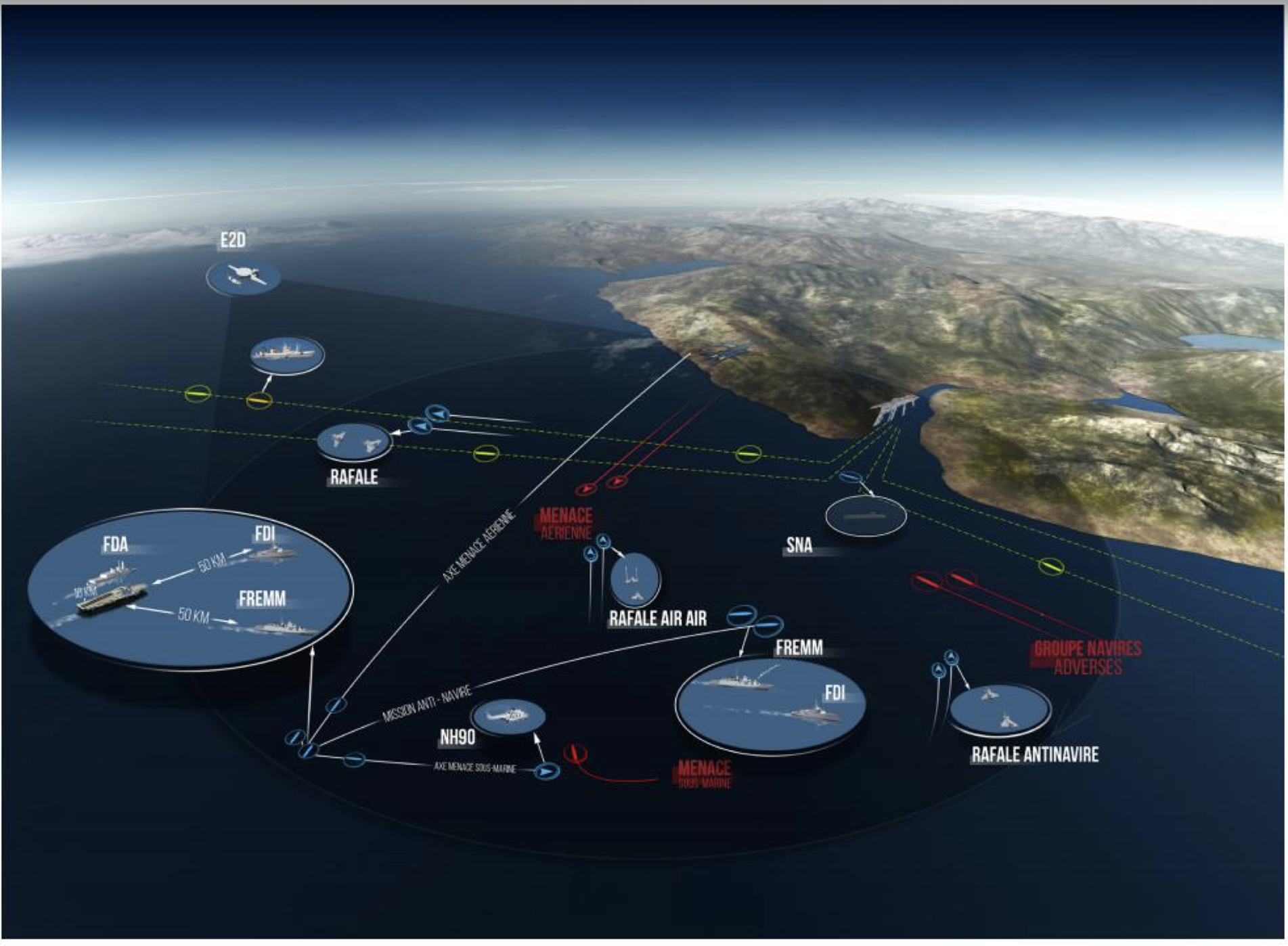
Maritime Patrol Component
Maritime Patrol Aircraft (MPA) are contributing to maritime airpower with their multiple missions’ capabilities and versatility. The concept of MPA (PATMAR in French) dates back to the Second World War after Pearl Harbor and ispartly attributed to the lack of intelligence resources at the time. During the cold war, maritime patrol took on an increasing importance, particularly in deterring Russian submarines and surface ships from approaching areas of interest. After the fall of the Berlin Wall during the 1990s, the MPA’s missions have extended from anti-submarine warfare to ISR operations and ground troop support, owing to their particularly powerful sensors. However, theproliferation of submarines around the world, followed by the return of great power states and the weakening of multilateralism, has always kept anti-submarine warfare at the heart of the MPA's missions.
France currently has 22 MPA called ATL2s, all commissioned in 1991. A genuine flying destroyer armed with a crew of 14 sailors, ATL2 is one of the few fielded aircraft in the world designed specifically for armed anti-submarine warfare. It thus contributes to supporting the French submarine deterrence force, as well as to participating in the protection of naval forces at sea against submarine and surface threats. It takes part in the control of both air and sea environments under and on the surface from the littoral zone to the open sea.
Its diversified detection capabilities (both active and passive), its engagement capabilities (MU 90 torpedoes and Exocet air-to-surface missiles) along with its C2 capabilities enable it to play various essential roles that master maritime airpower. Moreover, its projection capacity and long range of actions empower it to operate by itself or as a support asset at any point of strategic interest to France.
Its great adaptability not only makes it a highly valuable military tool in meeting operational needs, but also an effective player in “State Action at Sea”. Indeed, with its capabilities in intelligence gathering from image and electromagnetic sources and its capabilities to hunt submarine or surface threats (radar), ATL2 contributes to maritime rescue missions and fights against illicit trafficking or piracy.
Although its main mission is maritime air combat and operations, ATL2 sensors with its intelligence gathering capacity and the know-how of its naval aviation crews have been employed since the beginning of the 2000s in many air-land theaters. Consequently, MPA crews of the 21st and 23rd Navy Squadrons have participated in numerous operations in Africa and the Middle East, notably Operation Unified Protector in Libya and OIR in Iraq and Syria. Having also been endowed with a bombing capability (GBU 12), its first operational use dates back to 2013 during Operation Serval in Mali.
ATL2 Standard 6, A Brand New Combat System …
Launched in 2013, the ATL2 modernization program aimed to allow post-2030 operational use is pending the commissioning of the new maritime patrol system by 2035. Entrusted to Dassault Aviation (aircraft designer), THALES, and the French armies industry, SIAé, this program was dedicated to upgrading the CMS designed by Naval Group, the tactical visualization system designed by SAIAé, as well as the radar, acoustic, and optronic sensors designed by THALES in order to maintain an efficient combat system despite the age of the airframe. By the end of this program, 18 aircraft out of the 22 in service in the French Navy will be overhauled by the year 2024.
In 2019, the first modernized ATL2 was delivered to the French navy whose flight tests demonstrated a significant leap in its capabilities, particularly in regard to anti-submarine warfare. After a year of intense operational evaluationsconducted by the French naval aviation test center (CEPA/10S), the DGA, Dassault, Naval Group, and THALES, the ATL2 Standard 6 began its operational career on December 18th, 2020 within the 21st squadron. Its initial operational capability (IOC) has been focused on maritime operations. This is an important step prior to the realization of Full Operational Capability (FOC), scheduled for the beginning of 2022.
… And A Ramp-Up to the Next Generation of MPA
The ATL2 end-of-life schedule in 2035 requires preparations for its replacement starting today. In fact, it takes about 10 years between the decision to launch such an ambitious program and the first operational capability of a new maritime patrol aircraft (lessons learned from ATL1 and ATL2 programs).
Cooperation with Germany, a partner of ATL1, has been initiated given the synchronization of needs and timetables. The project, entitled MAWS (Maritime Airborne Warfare System), aims to provide France and Germany[6] with a new maritime patrol component by 2030/2035. In this context, a feasibility study began in November 2020 with the objective of determining, by the end of 2022, three combat system architectures that would meet the military needs of both these countries.
MAWS will be a system centered on a manned and armed main platform. Possible other systems could include drones, other manned aircraft, satellites, ground stations, etc. The emphasis is naturally placed on anti-submarine warfare capabilities but connectivity, the ability to operate in contested environments, or even the scalability of systems are also at the core of the thinking among these working groups.
To Conclude: A Future Shaped to Show France’s Air Maritime Power Ambition
Given the centrality of sea power in peace and prosperity, next generation of CSGs, scheduled to be operational from 2038 to 2080, and the “Future Maritime Patrol Aircraft” project of 2033 to 2075 are leading France and its Allies to a new century without any compromise on its differentiating air maritime power capabilities.
[1] Volatile, Uncertain, Complex, and Ambiguous: https://en.wikipedia.org/wiki/Volatility,_uncertainty,_complexity_and_ambiguity
[2] France’s Exclusive Economic Zone is 11, 691, 000 km² (4, 514, 000 square miles).
[3] Geoffrey Till, Seapower: A Guide for the Twenty-first Century (New York, NY: Routledge, 2013).
[4] Catapult Assisted Take-Off But Arrested Recovery
[5] Intelligence, Surveillance, and Reconnaissance
[6] Germany has to face the early withdrawal of its maritime patrol fleet (P-3C) by 2025 and has decided to acquire five US P-8A as an interim solution before the commissioning of MAWS.
Artikkelen ble først publisert i Luftled 2021-3 og er republisert i samarbeid med Vortex - Studies on Air and Space Power.
Foto: Hangarskipet Charles De Gaulle. Foto: Vortex


